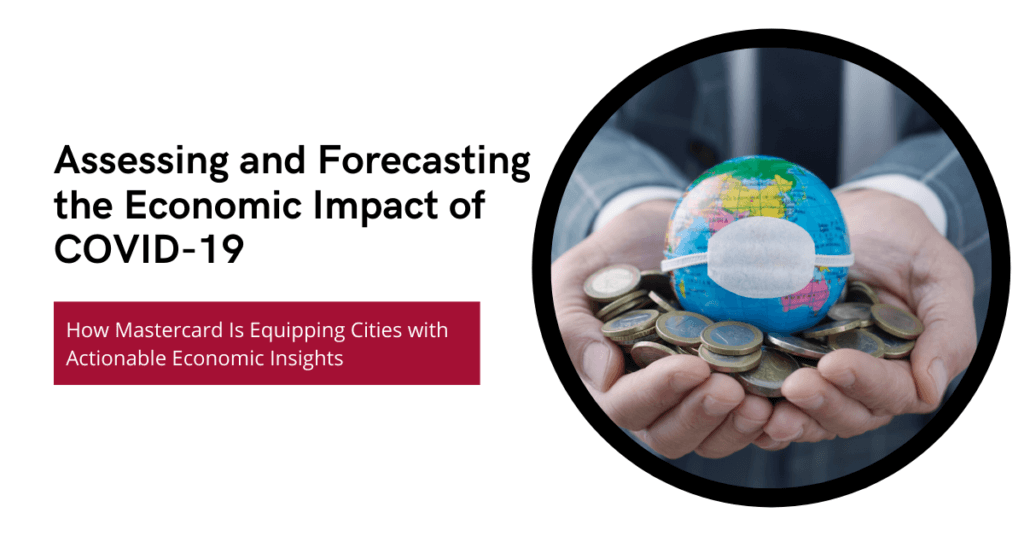
Equipping Cities with Actionable Economic Insights
The economic impact of the COVID-19 pandemic on cities has been massive. During a digital convening of city leaders, the subject of how to assess and forecast the economic impact of COVID-19 was discussed.
During the convening, we heard from Matt Lindsay of Mastercard and members of the New York City team. Mastercard recently made their Retail Location Insight Platform (MRLI) available to New York City in an effort to provide near real-time actionable insights. These insights will help city leaders analyze and estimate tax revenue so they can inform budget planning.
To help better understand how this software works, they shared how both Year-over-Year (YOY) and week-to-week comparisons are used to understand percentage decreases in spending each week. With this data, they can get a relative comparison to the same week from the previous year. The percentage changes and trends are then applied to the actual sales tax figures from 2019 to give predicted figures for 2020. These figures are used to inform their budget planning.
Below are some alarming stats from the MRLI platform:
- YOY for the last week in March, restaurant sales in Manhattan have dropped by over 90% while grocery sales in the Bronx have increased by 189%.
- Although YOY spending is up in New York City for the month of March, the sharp percentage decrease in the last week of March is a sign of things to come for April.
The NYC team explained there is a sales tax of 4.5% in New York City, however, this does not apply to food, beverage, groceries, and pharmacies. With sharp increases in groceries and decreases in all other sectors, the sales tax revenue for NYC is expected to drop significantly for the second quarter of 2020.
It should be noted that these figures are based on brick-and-mortar spend.
Given the lockdown restrictions in New York, there will likely have been an increase in spend online, which Mastercard has another tool that can analyze this data.
MRLI is now available for cities and governments in the US, Canada, UK, and Australia. The data is anonymized and aggregated transaction data which can be viewed from the county level all the way to the city block level.
Additional resource discussed are statistics from the central bank, primarily for Europe. You can find the data here.
